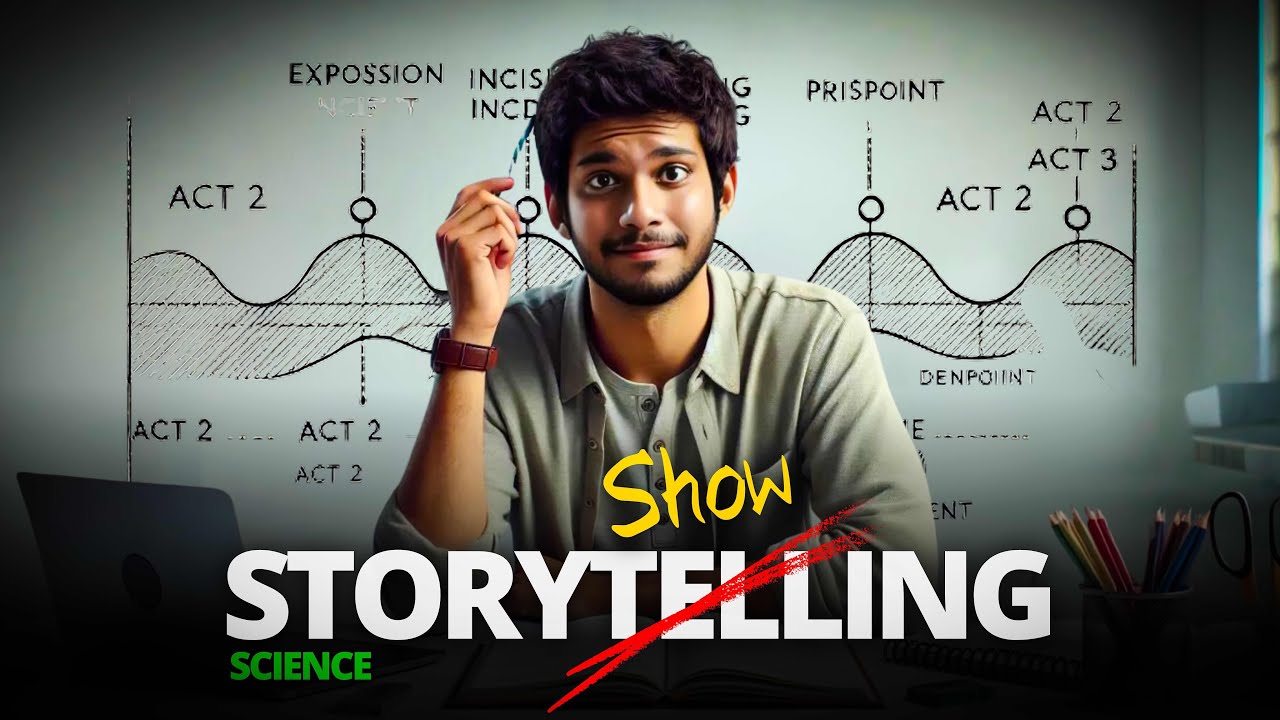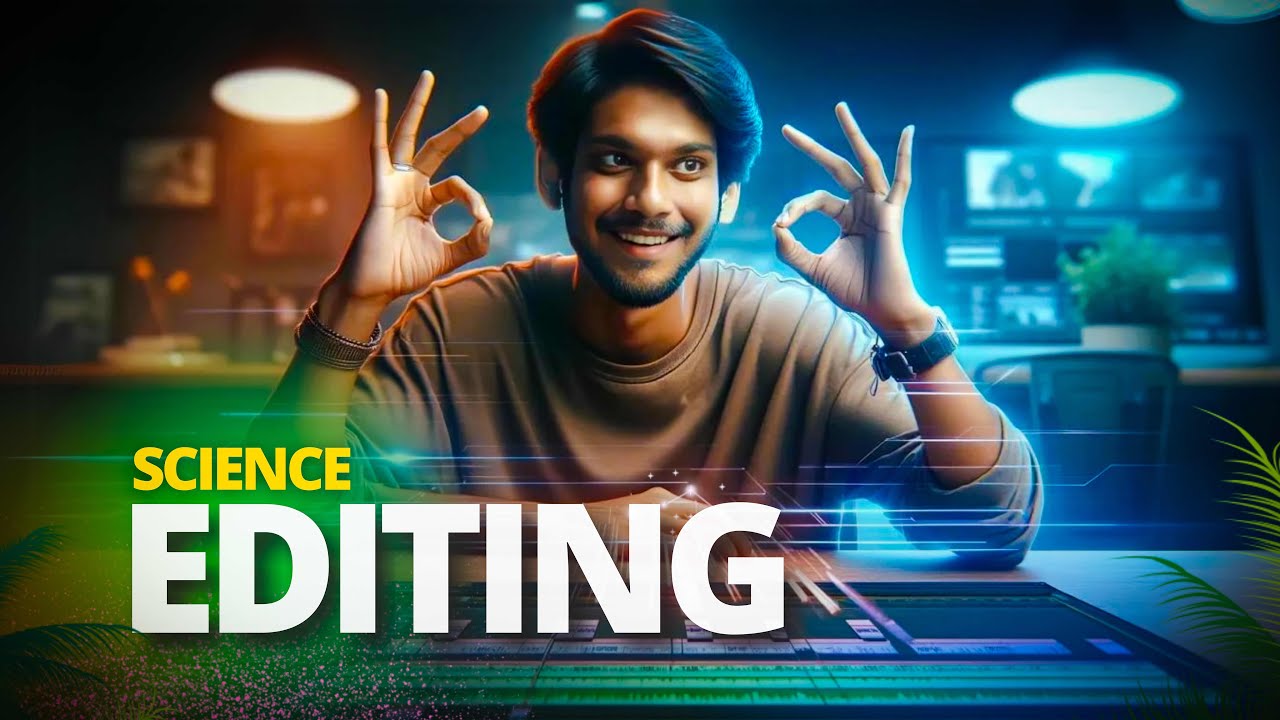Master Flow and Pacing in your VIDEOS
Summary
TLDRThis video script emphasizes the importance of pace and rhythm in video editing, which are crucial for viewer engagement and emotional impact. It outlines techniques like cutting on action, match cuts, and maintaining consistent motion to enhance storytelling. The video also stresses the significance of a fast-paced intro, the strategic use of music and sound design, and the deliberate choice of shot durations. It encourages editors to trust their instincts and innovate to captivate audiences.
Takeaways
- 🎥 **Pace and Rhythm Importance**: Pace and rhythm are crucial for video editing as they dictate the flow and timing, influencing viewer's emotional experience and engagement.
- ⏱️ **Defining Pace**: Pace refers to the speed at which the video progresses, affecting how the story or message is conveyed.
- 🎶 **Understanding Rhythm**: Rhythm pertains to the pattern and timing of cuts, transitions, and movements within the frame.
- 🔍 **Identifying Key Beats**: To establish tempo, identify key moments and emotions in the story that need emphasis through editing decisions.
- ✂️ **Cutting on Action**: Create seamless transitions by cutting at specific moments of action to maintain scene flow and energy.
- 🖼️ **Match Cuts**: Use visual or audio similarities to connect shots, creating smooth transitions and keeping viewers engaged.
- 🚶♂️ **Consistent Motion**: Ensure shots have similar motion or camera movement to show progression and maintain a cohesive flow.
- 🏁 **Pacing for Engagement**: Start with a fast-paced intro to engage viewers, then adjust the tempo for the body of the video, increasing it again for important parts.
- 🎵 **Music and Sound Design**: Align cuts and transitions with the music's beat or rhythm to create a cohesive and emotionally impactful edit.
- ✂️ **Jumps and L Cuts**: Utilize jump cuts and L and J cuts to add variety, control pace, and maintain a cohesive narrative.
- ⏳ **Shot Duration**: Adjust shot duration to match viewer's need for information absorption, using longer shots for tension and quick cuts for urgency.
- 💡 **Trust Your Instincts**: Editing is an art form; trust your intuition and take risks to create a unique rhythm that captivates the audience.
Q & A
What is the difference between pace and rhythm in video editing?
-Pace refers to the speed at which your video progresses, influencing the viewer's emotional experience and engagement. Rhythm, on the other hand, refers to the pattern and timing of cuts, transitions, and movements within the frame.
How does understanding the story or message impact the pace of a video?
-Understanding the story or message helps identify key beats, moments, and emotions to emphasize, which in turn establishes an overall tempo and guides editing decisions.
What is the significance of cutting on action in video editing?
-Cutting on action creates seamless transitions between shots at specific moments of action, maintaining the flow and energy of a scene.
Can you explain the concept of match cuts in video editing?
-Match cuts connect two shots through visual or audio similarities, creating smooth transitions that keep the viewer engaged.
Why is it important to have similar motion or camera movement in shots?
-Having similar motion or camera movement in shots helps show progression in a video and contributes to a cohesive flow, making it easier on the viewer's eyes and keeping them more engaged.
How can the intro of a video impact viewer engagement?
-A fast-paced tempo in the intro, such as high-tempo music or fast-cut clips, can engage the viewer and encourage them to watch the entire video.
What role does music and sound design play in mastering pace and rhythm?
-Aligning cuts and transitions with the beat or rhythm of the music creates a powerful and cohesive edit that enhances the emotional impact.
What are L cuts and J cuts, and how do they affect the pace and rhythm of a video?
-L cuts are when the audio from one clip carries on while the visuals have been cut, and J cuts are where the audio from one clip starts before you see the visuals. They add variety and help control the pace and rhythm.
Why is it important to pay attention to the duration of each shot in a video?
-The duration of each shot should be as long as needed for the viewer to understand the story. Longer shots can build tension, while quick cuts can create a sense of urgency and excitement.
How can trusting your instincts and taking risks lead to innovative editing results?
-Trusting your instincts and experimenting with different techniques can lead to unique rhythms that captivate your audience, as editing is an art form where breaking the rules can result in impactful outcomes.
Outlines

Cette section est réservée aux utilisateurs payants. Améliorez votre compte pour accéder à cette section.
Améliorer maintenantMindmap

Cette section est réservée aux utilisateurs payants. Améliorez votre compte pour accéder à cette section.
Améliorer maintenantKeywords

Cette section est réservée aux utilisateurs payants. Améliorez votre compte pour accéder à cette section.
Améliorer maintenantHighlights

Cette section est réservée aux utilisateurs payants. Améliorez votre compte pour accéder à cette section.
Améliorer maintenantTranscripts

Cette section est réservée aux utilisateurs payants. Améliorez votre compte pour accéder à cette section.
Améliorer maintenantVoir Plus de Vidéos Connexes
5.0 / 5 (0 votes)






